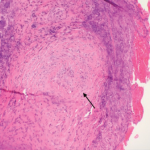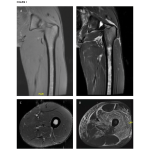NEW YORK (Reuters Health)—Obesity in women and current smoking in men appear to be the strongest predictors of lack of remission in early rheumatoid arthritis (RA) within one year, according to new research presented June 13 at EULAR 2018, the annual meeting of the European League Against Rheumatism, in Amsterdam.1 Even though early identification and…
Search results for: fatigue
Pain Links Fibromyalgia & RA
Many patients with rheumatoid arthritis (RA) report pain despite excellent control of inflammation with immunotherapies. Variable degrees of coexisting fibromyalgia (FM) may explain this disparity. RA patients who have the highest 2011 ACR FM survey criteria scores appear to share neurobiologic features consistently observed in FM patients. This study is the first to provide neuroimaging evidence that RA is a mixed pain state, with many patients’ symptoms being related to the central nervous system rather than to classic inflammatory mechanisms…

Precision Medicine for Lupus Continues to Progress
CHICAGO—The promise of precision medicine—the tailoring of treatment to a given patient based on genetics and other factors—has probably been best illustrated in oncology, with therapies targeted specifically to markers expressed on tumors. But rheumatology is in the thick of precision medicine as well, said Judith James, MD, PhD, chair of the arthritis and clinical…

Flare Risk Increases When Medication Is Stopped Prior to Arthroplasty
After total hip or knee arthroplasty, flares are common in patients with rheumatoid arthritis (RA), according to a recently published study.1 Higher disease activity at baseline appears to be linked to flares, but use of such medications as biologics and methotrexate did not independently predict flaring. “Contrary to the notion that patients with established RA…

Case Illustrates the Difficulty Diagnosing Granulomatosis with Polyangiitis
Granulomatosis with polyangiitis (GPA) was first described in the British Medical Journal in 1897 by Scottish otolaryngologist Peter McBride.1 GPA is a relatively rare, systemic necrotizing vasculitis that can make diagnosis challenging. The incidence has been estimated anywhere between two and 12 cases per million.2 GPA mainly affects adults between the ages of 45 and…

Ethics Forum: Righting the Wrong Diagnosis
A 54-year-old woman is establishing care in your clinic after retirement of her previous rheumatologist. Your review of her records suggests that she was diagnosed with systemic lupus erythematosus seven years ago on the basis of symptoms of body pain and fatigue, and serologic evidence of positive ANA 1:40 (speckled) and borderline anti-SSB antibody. She…

Tips & Tools for Dealing with Bad Patient Outcomes
Bad things happen to good rheumatologists—and to their patients—and can have profound personal and professional consequences for the doctor. Sometimes recommended treatments can have predictable, but devastating, side effects. Even if the rheumatologist does everything right according to evidence-based best practice, patients can still have bad outcomes, even die—with resulting feelings of sadness, anger, guilt…

Case Review: MRI Leads to Non-Rheumatic Diagnosis Surprise
Rheumatologists often rely on magnetic resonance imaging (MRI) in the evaluation of suspected muscular diseases. Here, we describe a case in which unexpected findings on MRI pointed to a diagnosis rarely considered as a mimicker of rheumatologic disease. The Case A 19-year-old man of Middle Eastern descent was admitted to our hospital for evaluation of…
Subcutaneous Belimumab Improves Systemic Lupus Srythematosus Outcomes
NEW YORK (Reuters Health)—Subcutaneous belimumab improves outcomes in anti-dsDNA-positive hypocomplementemic patients with systemic lupus erythematosus (SLE), according to results from a Phase 3 randomized, controlled trial. Intravenous belimumab is approved by the U.S. Food and Drug Administration and the European Medicines Agency for the treatment of patients with active, autoantibody-positive SLE who are receiving standard…

Looking Back on 40 Years with Rheumatoid Arthritis
The year was 1978. I was a newly married, 25-year-old registered nurse working on a medical unit at Mercy Medical Center in Oshkosh, Wis. I began to notice morning stiffness, increasing fatigue, and bilateral heel and ankle pain. Every step hurt as I walked down the halls to care for my patients. My diagnosis was…
- « Previous Page
- 1
- …
- 31
- 32
- 33
- 34
- 35
- …
- 63
- Next Page »